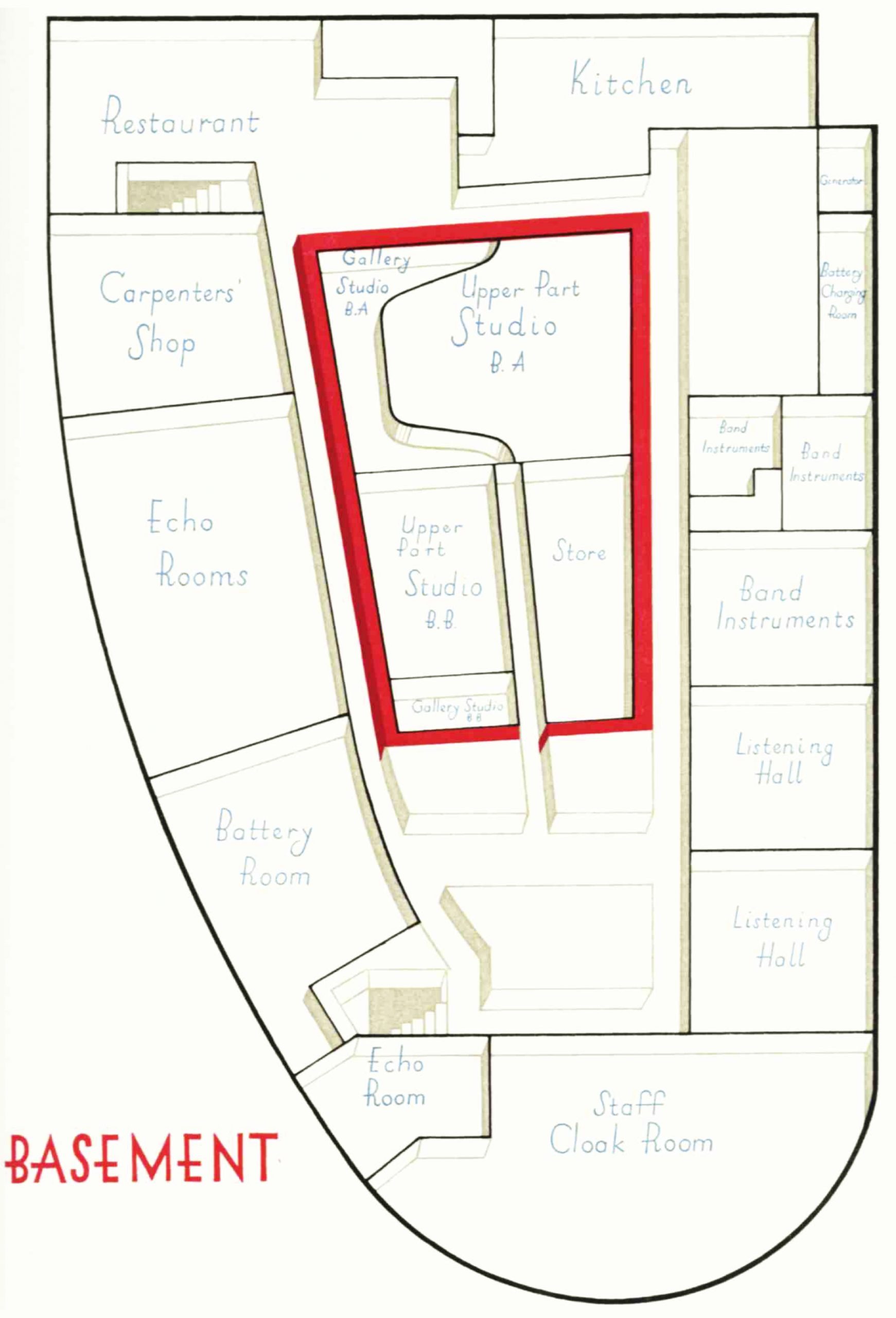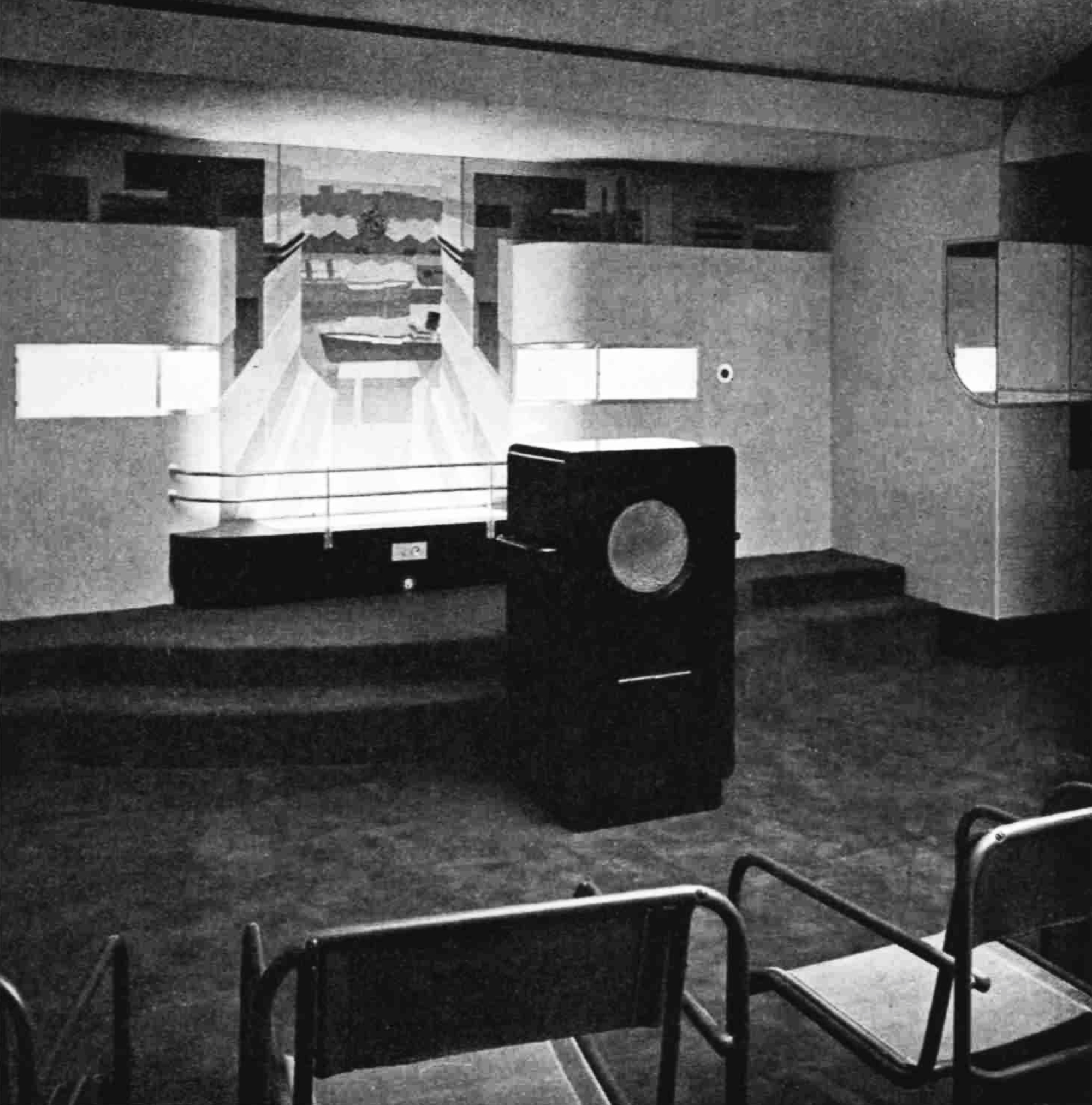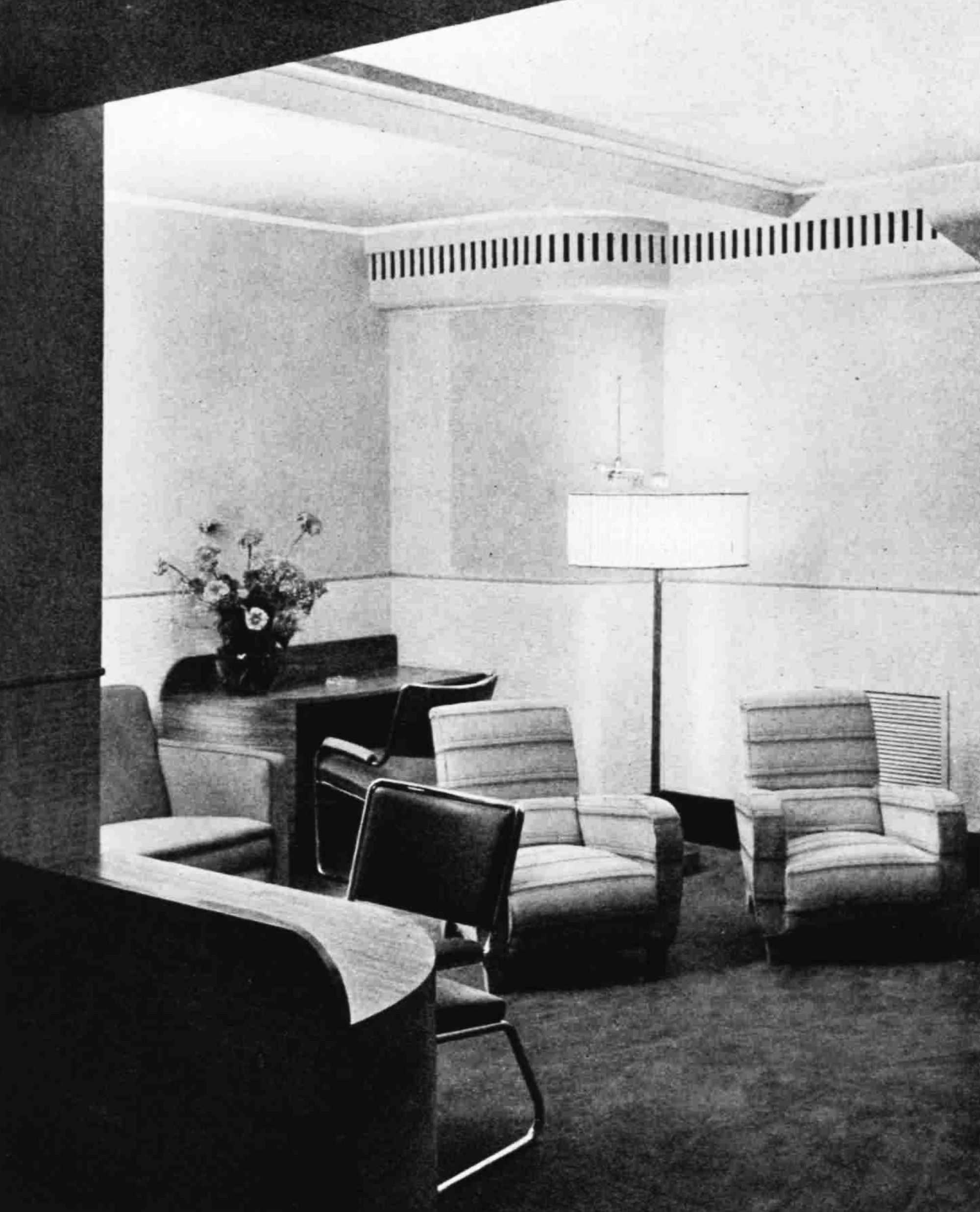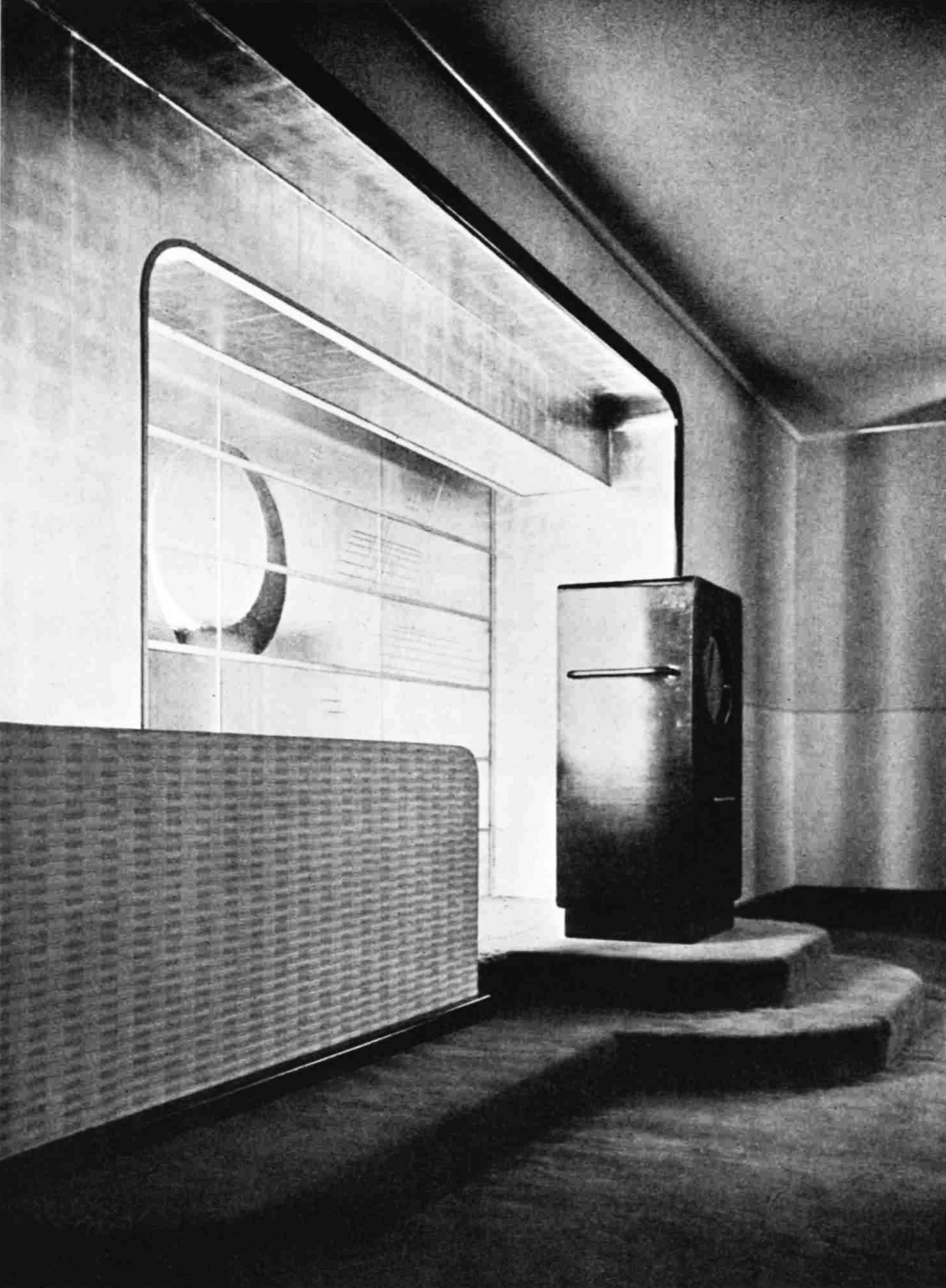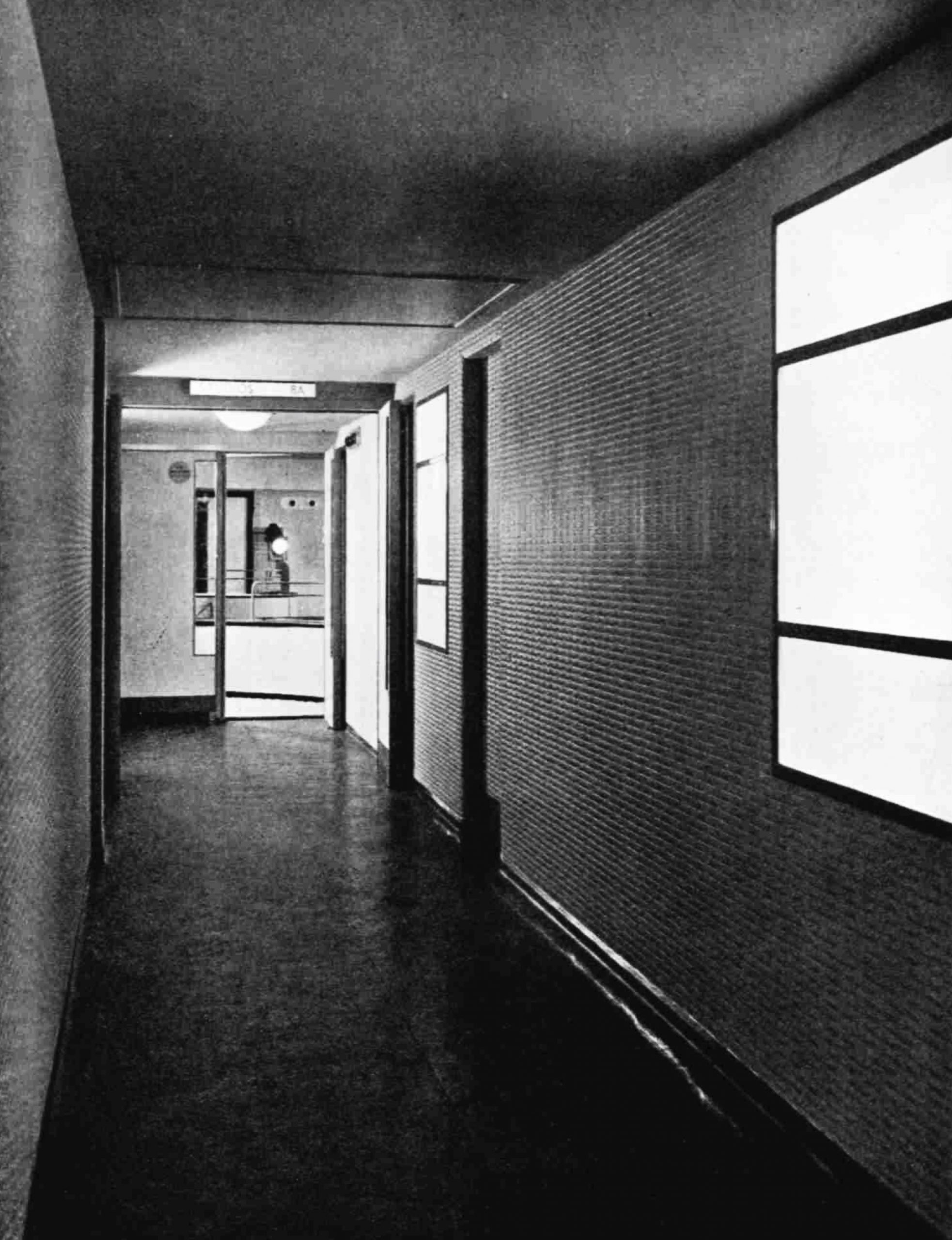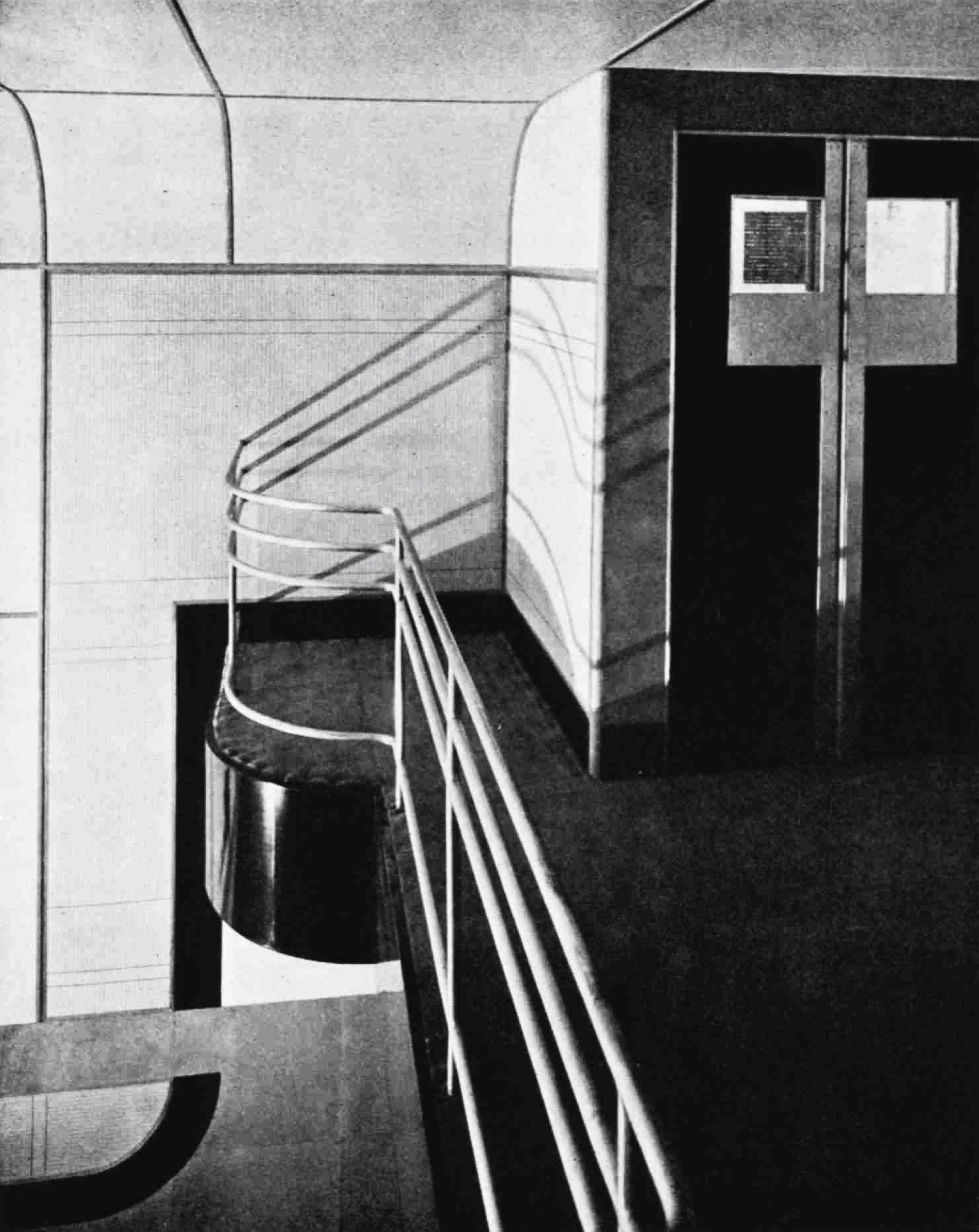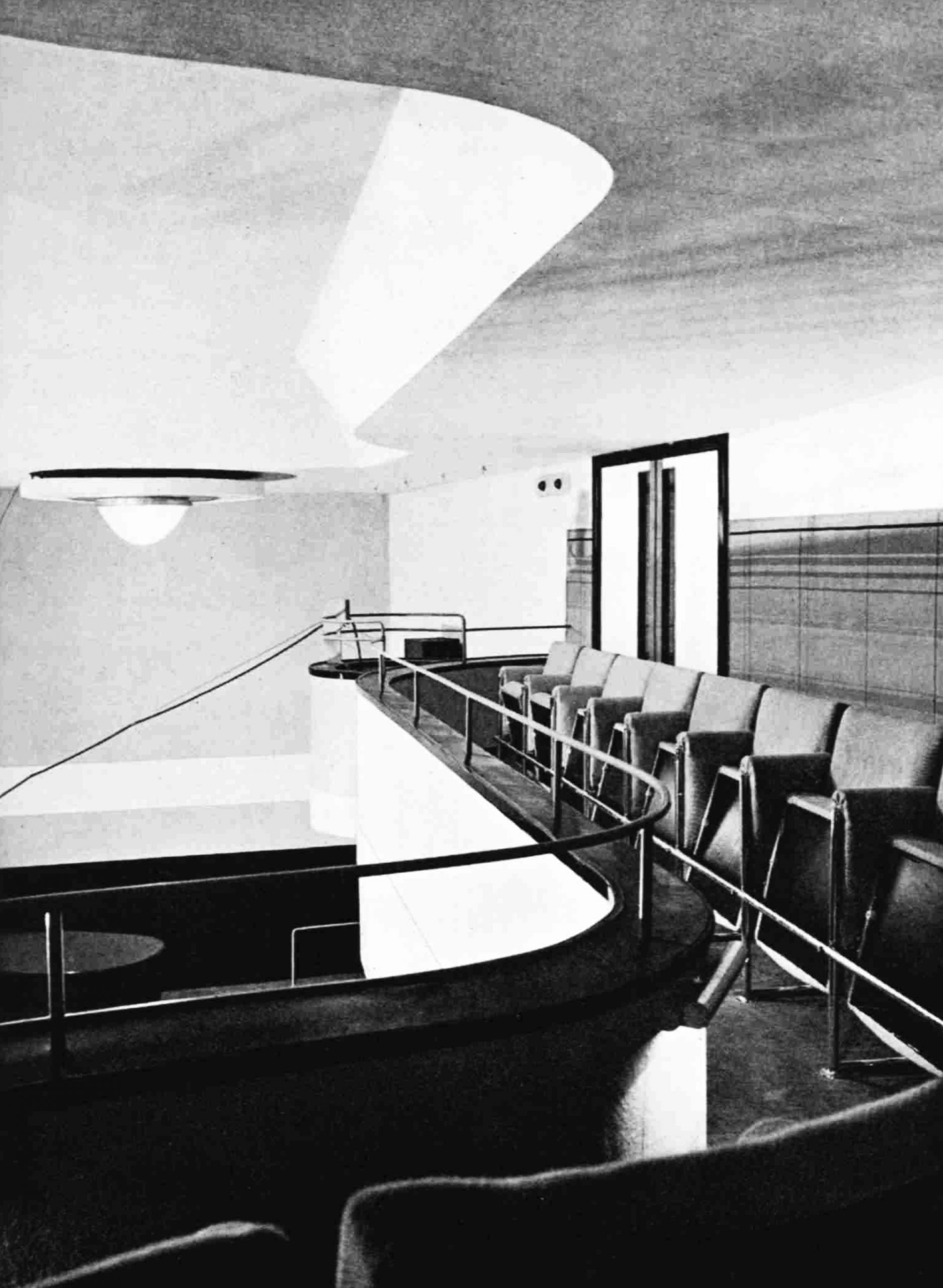Subsidiary Equipment
Accommodation has been found at Broadcasting House for the installation of apparatus which has only come into general use since the building was designed. For example, control cubicles have been provided on the seventh floor where musicians can control outgoing programmes, and hear them on loudspeakers, without it being necessary for them to sit at a control position in the main Control Room. Recently, the B.B.C. has made use of the Blattner-Stille system of steel-tape recording of programmes. Accommodation for the recording machines (and for the storage of the steel-tape records) has been found on the same floor, the apparatus being connected with the Control Room so that any outgoing programme can be recorded or played back on to a transmission or into any studio in which the performers are rehearsing. There are also a number of quality-checking rooms, which have received special acoustic treatment, quite apart from those next to the studios. In these rooms engineers can sit and listen by wireless to any outgoing programme as an independent check, in addition to those responsible for handling it at the studio, Control Room, or transmitters. Quality-checking is mainly carried out on loudspeakers, as the majority of listeners use them.
There are also two Listening Halls designed for the use of Press critics or others who may wish to hear any particular transmission under satisfactory conditions of reception. These, like the other rooms designed for high-quality reproduction, are acoustically treated.
Mention should also be made of the two Dramatic Control Rooms which take their place in the chain of transmission between the studios and the main Control Room. Their function is to enable dramatic producers to use any number of studios up to eleven simultaneously on one transmission, and to mix their outputs in synchronisation and strength as may be required. In this way stage management is facilitated in the studios and a completely mixed programme is passed into the Control Room for distribution to the various transmitters. It would be quite impossible to undertake some of the elaborate dramatic productions broadcast in recent years if the ‘effects’, incidental music, supers, and principals, had all to be accommodated in one studio.

